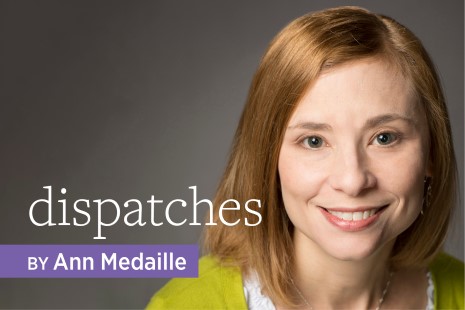
Playing a game. Constructing with blocks. Designing a dress. What do these activities have in common? All involve the imagination. A person’s capacity to imagine not only improves their happiness and well-being, but it can also help them learn better, according to a 2015 study in Scientific Reports.
Acts of imagination include both play and creative endeavors. While play may appear to be merely a pleasurable activity, it serves an important role in human development. Creative endeavors, such as projects or everyday forms of problem-solving, give purpose and meaning to human existence.
While libraries can be places for quiet contemplation and intense concentration, they are also places of fun, exploration, and imagination. Librarians can support imaginative learning for those of all ages by providing opportunities for play and creative expression. For instance, they can provide access to videogames or digital experiences, such as virtual field trips, that support learning.
Librarians can also provide environments, materials, and tools that encourage and support creative thinking and play, like makerspaces, media labs, and virtual reality studios.
When facilitating creativity, librarians should support the expression of different ideas, encouraging learners to show respect for their peers’ ideas and avoid being overly critical of them.
When facilitating play, librarians can provide periods of free play followed by more directed learning activities. Introduce materials and allow learners to explore with them before asking questions or providing suggestions focused on a learning outcome. Too much intervention could undermine the playfulness of the situation and change it from being a learner-driven activity to something less enjoyable.
What’s more, the practice of being creative involves cognitive processes, such as memory and attention, that are beneficial for learning. Creativity involves divergent thinking, or the production of many, varied, and possibly original responses to a situation or problem. In contrast, convergent thinking uses logic to arrive at a single, best solution to a problem.
Most iterations of the creative process consist of four major steps: (1) preparation, or thinking about a problem and gathering information about it; (2) incubation, or reflecting—often unconsciously—about the problem; (3) illumination, or discovering a solution, often in a moment of inspiration; and (4) verification, or judging the solution for effectiveness.
The creative process also focuses on the role of problem-solving. Creative problem-solving combines both divergent and convergent thinking skills to arrive at solutions to ill-defined problems. For instance, to implement creative problem-solving, try asking learners open-ended questions that encourage them to generate ideas or see things from alternative points of view.
Here are a few more strategies to integrate imagination and creativity into library activities:
- Host game events for individuals or families. Provide games and puzzles for checkout.
- Host design challenges.
- Provide makerspaces, labs, and studios. Lead workshops teaching creative or scientific skills in these spaces.
- Invite speakers who model creative processes, have solved unique problems, or can stimulate curiosity about a variety of topics.
- Exhibit creative products made by other learners, community members, artists, scientists, and others.
Librarians should establish a supportive social environment to give learners a safe space where they can try new things. You can foster learners’ intrinsic motivation and encourage pursuing areas of interest. Finally, consider integrating music, theater, and other creative arts into lessons and activities.
Adapted from The Librarian’s Guide to Learning Theory by Ann Medaille (ALA Editions, 2023).


